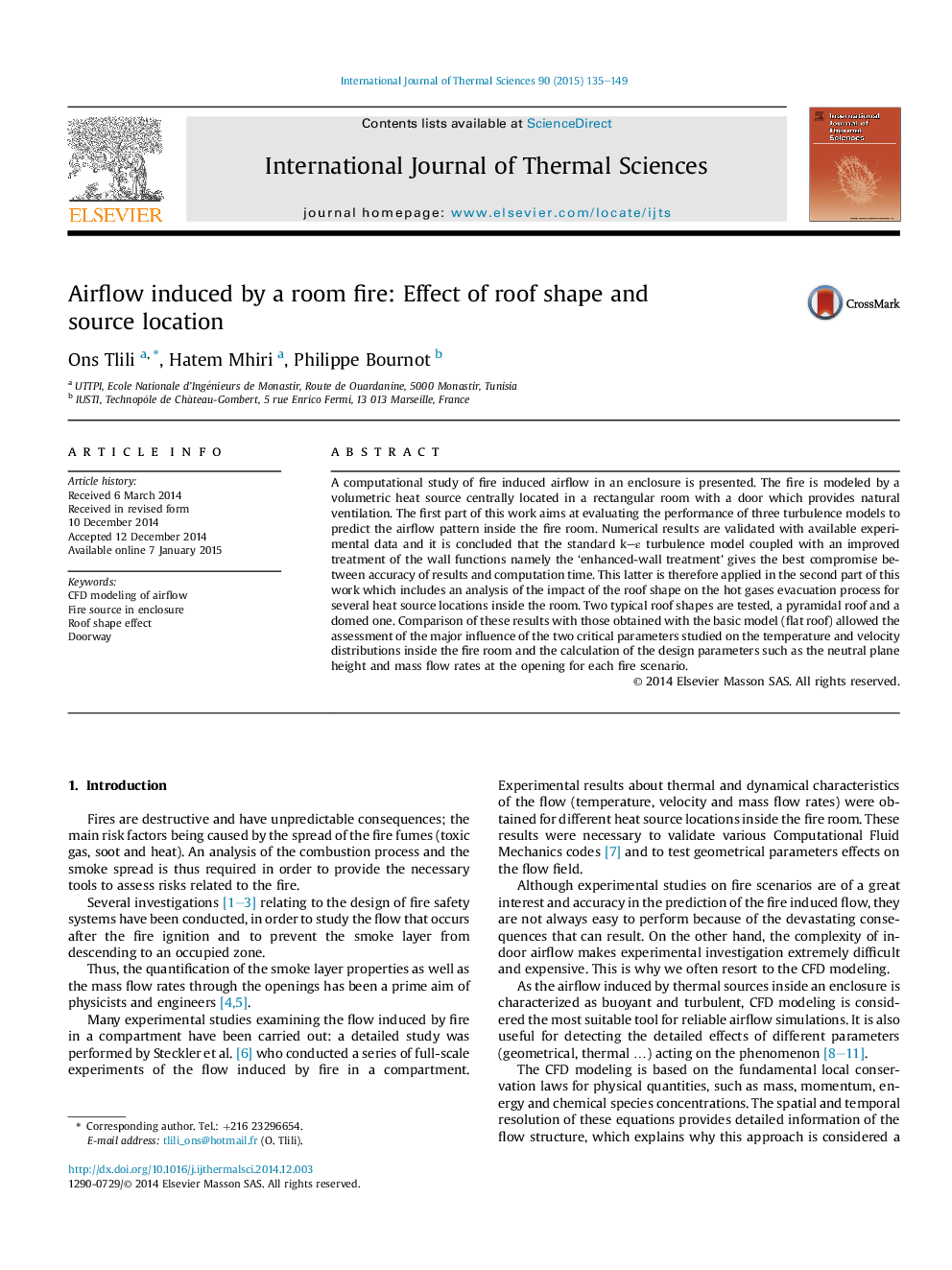| Article ID | Journal | Published Year | Pages | File Type |
|---|---|---|---|---|
| 668114 | International Journal of Thermal Sciences | 2015 | 15 Pages |
Abstract
A computational study of fire induced airflow in an enclosure is presented. The fire is modeled by a volumetric heat source centrally located in a rectangular room with a door which provides natural ventilation. The first part of this work aims at evaluating the performance of three turbulence models to predict the airflow pattern inside the fire room. Numerical results are validated with available experimental data and it is concluded that the standard k-ε turbulence model coupled with an improved treatment of the wall functions namely the 'enhanced-wall treatment' gives the best compromise between accuracy of results and computation time. This latter is therefore applied in the second part of this work which includes an analysis of the impact of the roof shape on the hot gases evacuation process for several heat source locations inside the room. Two typical roof shapes are tested, a pyramidal roof and a domed one. Comparison of these results with those obtained with the basic model (flat roof) allowed the assessment of the major influence of the two critical parameters studied on the temperature and velocity distributions inside the fire room and the calculation of the design parameters such as the neutral plane height and mass flow rates at the opening for each fire scenario.
Keywords
Related Topics
Physical Sciences and Engineering
Chemical Engineering
Fluid Flow and Transfer Processes
Authors
Ons Tlili, Hatem Mhiri, Philippe Bournot,
